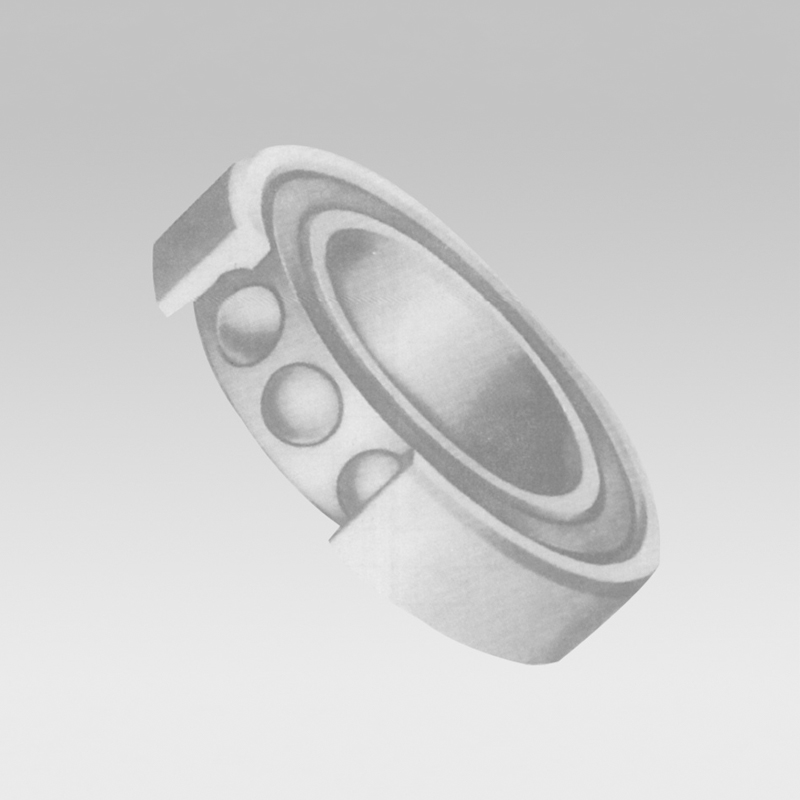
9 月 . 28, 2024 07:59 Back to list
Understanding the Benefits and Applications of Radial Taper Roller Bearings in Machinery
Understanding Radial Taper Roller Bearings
Radial taper roller bearings are essential components in various mechanical systems, known for their ability to handle both radial loads and axial loads efficiently. Unlike traditional cylindrical bearings, taper roller bearings utilize a cone-shaped roller design that allows for increased contact area between the rolling elements and the raceway, thereby enhancing load-carrying capabilities.
Design and Structure
The fundamental design of radial taper roller bearings consists of an inner ring (cone), an outer ring (cup), and tapered rollers. The rollers are arranged in such a way that they taper towards a point on the axis of the bearing. This unique shape allows the bearings to accommodate heavy radial and axial loads, making them ideal for applications involving heavy machinery and automotive components.
The geometry of the roller elements plays a crucial role in determining the bearing's performance. The contact angle, which is the angle between the line of action of the load and the radial line, influences how effectively the bearing can disperse loads. Taper roller bearings are available in various sizes and taper angles, enabling engineers to select the best option for specific applications.
Key Advantages
1. Load Capacity One of the most significant advantages of radial taper roller bearings is their high load-carrying capacity. They are designed to support heavy loads while maintaining reliable performance, making them suitable for industries such as construction, mining, and automotive.
2. Versatility These bearings are versatile and can be found in many applications, from car wheel hubs to industrial gearboxes. The ability to handle both radial and axial loads simultaneously makes them highly adaptable.
radial taper roller bearings

4. Longevity With proper maintenance, radial taper roller bearings can last for many years. Their robust design often translates to extended service life, which can result in lower operating costs and reduced downtime.
Applications
Radial taper roller bearings can be found in numerous applications across various industries. In automotive engineering, they are commonly used in axles, transmissions, and wheel hubs. In industrial machinery, they are integral to conveyor systems, electric motors, and heavy-duty equipment. Their ability to endure shock loads and vibrations makes them a preferred choice in these demanding environments.
Maintenance and Care
Proper maintenance is crucial for ensuring the longevity and efficiency of radial taper roller bearings. Regular inspections for signs of wear, such as pitting or discoloration of the raceways, can help identify potential issues before they lead to failure. Lubrication is also critical; using the right type and amount of lubricant can significantly enhance performance and reduce friction.
Conclusion
In summary, radial taper roller bearings are a vital part of modern machinery and vehicles, recognized for their high load-bearing capacity and versatility. Their unique design makes them indispensable in various applications throughout multiple industries. Understanding their structure, advantages, applications, and maintenance needs can help engineers and technicians make informed decisions, ensuring optimal performance and reliability in their systems.
Latest news
-
Unlocking Efficiency with Spherical Roller Bearings
NewsOct.29,2024
-
The Ultimate Guide to Thrust Ball Bearings
NewsOct.29,2024
-
The Power of Thrust Roller Bearings: Engineered for Excellence
NewsOct.29,2024
-
The Power of Deep Groove Ball Bearings for Your Application Needs!
NewsOct.29,2024
-
The Power and Performance of Cylindrical Roller Bearings
NewsOct.29,2024
-
High-Quality Ball Bearing Manufacturing Machines
NewsOct.29,2024
